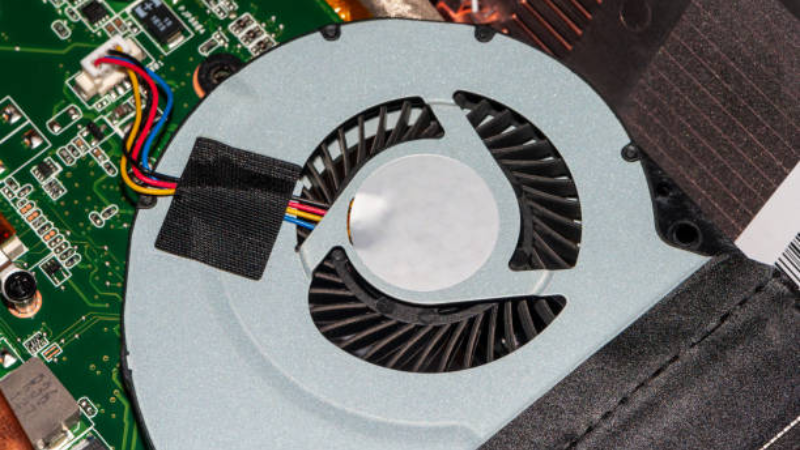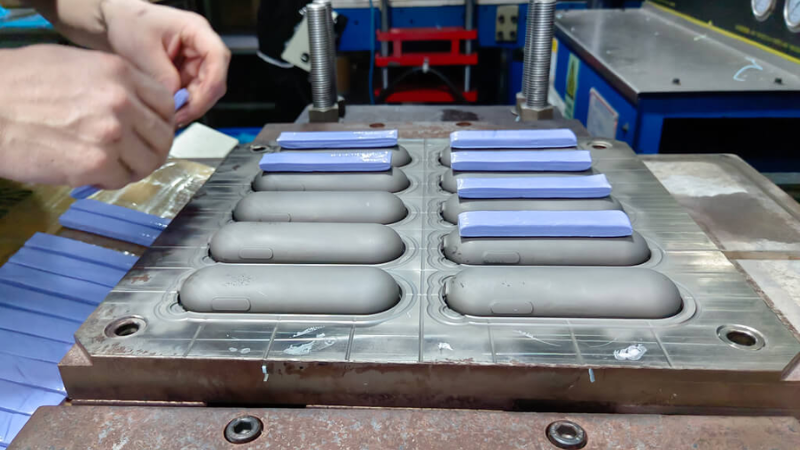Vibrations are normal in devices like phones, cars, and medical devices. Unfortunately, leaving these vibrations alone can lead to wear and tear, noise, and damage. With vibration-damping materials, you can improve the performance of your equipment and extend its lifespan. Although several vibration-damping materials include metal, cork, and rubber, silicone remains the ultimate.
This article discusses why silicone rubber is the best material for vibration control, its applications, and how to choose the best one for your application.
What Is Silicone Rubber?

Silicone rubber is a synthetic rubber with silicon, hydrogen, oxygen, and carbon as its constituent elements. Depending on the final product, this elastomer has a chemical composition that includes the silicone polymer, a cross-linking agent, and additives. Usually, the cross-linking agent used during the manufacture of silicone rubber is platinum or peroxide. This agent is added to the silicone polymer, initiating a chemical reaction that makes the material elastomeric.
Furthermore, the additives used in silicone rubber reinforce its properties. For instance, pigments enhance the final product’s color, while carbon black improves the tensile strength of silicone rubber.
Regardless of its additives, this elastomer has excellent electrical properties, high thermal conductivity, and good chemical stability. Furthermore, silicone rubber is easily molded to suit several applications because of its durability and flexibility.
How Is Silicone Rubber Made?

The manufacturing process for silicone rubber is relatively straightforward. The first step in the manufacturing process is to mix and heat the constituents of silicone rubber – silicone polymer, cross-linking agent, and the appropriate additive for the application.
After heating the constituents into a homogenous mixture, the elastomer can be extruded or molded. The extrusion process forces the silicone mixture into a die to form a continuous product. With molding, however, the silicone mixture is injected into a mold and allowed to cure.
During the curing process, a peroxide or platinum catalyst is added to initiate the cross-linking reaction. After the silicone rubber is cured, it is trimmed and cleaned to create the final product.
It is important to note that the properties of the final product affect the performance of silicone rubber as a damping material. For instance, the hardness of the material affects its vibration-damping effect. Softer silicone rubber materials are better at absorbing shock than harder silicone rubber.
Furthermore, the thickness of the final product also affects vibration damping. The thicker the elastomer, the higher its vibration-damping effect.
Hongju Awaits Your Quote Request!
How Does Silicone Rubber Dampen Vibrations?

Mechanical systems often produce vibrations from the occurrence of friction or mechanical shocks. Leaving these vibrations alone could result in damage to the system, lower efficiency, and cause noise. Therefore, it is highly important to dampen vibrations. Damping vibrations is a process that eliminates or reduces vibrations in a system. Materials like silicone can be used to dampen vibrations in a system.
Because of its elastic and viscous properties, silicone rubber is an excellent vibration dampener. It absorbs the vibrations and dissipates them as heat to the surrounding environment. As silicone absorbs vibrations, it deforms. The internal frictional forces within the elastomer then dissipate the energy over many cycles. As a result, the elastomer reduces the frequency and amplitude of vibrations in a mechanical system.

Silicone rubber exhibits several vibration-damping characteristics, including;
- Hysteresis: This is when the response of a mechanical system depends on its input. The input may result in a lag when it is changed. Hysteresis is a common phenomenon in physical systems with internal damping. Silicone rubber also exhibits this phenomenon when exposed to cyclic loading and unloading. Nevertheless, the composition of the elastomer determines its hysteresis behavior. For instance, soft silicone rubber deforms easily and takes longer to recover. Consequently, it exhibits a more significant hysteresis compared to hard silicone rubber.
- Viscoelasticity: This is when a material exhibits viscous and elastic properties when it undergoes deformation. Silicone rubber possesses viscoelastic properties. Under stress, the elastomer deforms and acts as an elastic. The elastomer can return to its shape once the stress is removed. However, if the stress is maintained, the silicone rubber will continue to deform and exhibit vicious behavior.
- Damping coefficient: measures the amount of energy dissipated after each deformation cycle. Materials with high damping coefficients reduce the amplitude of vibrations in a system. However, the damping coefficient of silicone rubber is relatively low. Nevertheless, this elastomer is still effective in reducing vibrations, especially if it is thick. The thicker the silicone rubber, the higher its damping coefficient.
- Shear deformation: changes the shape of a material without changing its volume. This phenomenon occurs when forces acting in opposite directions are applied to two parts of a material. Silicone rubber also undergoes shear deformation. Reinforcing silicone rubber with fillers during manufacture may make it more resistant to shear deformation.
- Frictional damping: occurs when two surfaces are in relative motion. These surfaces dissipate heat due to the friction between them. Silicone rubber exhibits frictional damping depending on its surface. If the elastomer has a smooth surface, there is less frictional damping than if its surface is rough. In addition, a coated silicone surface has a lower amount of damping.
Applications of Silicone Rubber as a Vibration-damping Material

Because of its vibration-damping effect, silicone rubber is used in several industries, including;
- Aerospace: landing gear, propellers, and rotors use vibration dampeners like silicone rubber to reduce noise and improve performance.
- Automotive: suspension systems, exhaust systems, engine mounts, and steering systems use vibration dampeners like silicone rubber
- Electronics: silicone rubber dampens vibration in electronic devices such as printers, copiers, smartphones, and hard disk drives in laptops.
- Medical devices: silicone rubber dampens vibration in medical devices like prosthetics, MRI, and Ultrasound machines.
Hongju Awaits Your Quote Request!
Why Choose Silicone Rubber over Other Vibration Dampeners?
Silicone rubber is not the only vibration-damping material on the market. Other vibration dampeners include rubber, metal, cork, and viscoelastic polymers like polyvinylchloride (PVC) and polyurethane.
However, silicone offers exceptional properties that make it a top choice. These properties include its broad temperature range, flexibility, electrical insulation, and chemical resistance.
What Should You Consider When Selecting Silicone Rubber for Vibration-Damping Material?

Before choosing silicone rubber as a vibration-damping material, it is essential to note that several factors affect the damping effect of the material. These factors include temperature, frequency, amplitude, and hardness.
Temperature affects the damping properties of silicone. With increasing temperature, silicone becomes less stiff, increasing its damping capabilities. Furthermore, the vibration frequency is another critical factor. The lower the frequency of vibration, the higher the damping properties of the silicone elastomer.
The vibration amplitude also affects silicone’s effectiveness as a vibration-damping material. At low amplitudes, silicone has a low dampening effect. Nevertheless, if the amplitude is too high, the elastomer may reach its deformation limits and become less effective in damping vibration.
The vibration-damping effects of silicone rubber also depend on its hardness. Softer silicone materials deform easily and absorb more vibrations than hard silicone materials.

Guidelines to Consider Before Choosing Silicone as a Vibration-damping Material
Depending on the additives used in the manufacturing process, there are different types of silicone rubber with their characteristic properties. Therefore, your application’s operating conditions are critical to your choice of silicone as a vibration dampener.
When selecting a silicone material for vibration damping, it’s important to consider the temperature, amplitude, and range of your application. The suitable silicone material should be able to withstand the expected conditions and effectively dampen vibrations. Environmental factors such as weather can also be important considerations, as some silicon materials are more resistant to the elements.
Cost is also a critical factor, so making sure the silicone material dampens vibrations and fits your budget is essential. Selecting the right silicone material that meets your needs and budget is important for achieving your vibration-damping goals.
How to Test and Evaluate Silicone Rubber for Vibration Damping?
Testing and validating the reliability and effectiveness of silicone rubber as a damping material is essential because it helps to prevent unexpected failures and increase overall performance. It also reduces maintenance costs and ensures the material meets the specifications of your application.
Some standard testing methods to evaluate the performance of silicone rubber as a damping material include:
Dynamic mechanical analysis (DMA): DMA tests a material’s viscoelastic properties, including the damping coefficient. During the test, the material is exposed to a small oscillating force over several temperatures and frequency ranges. The resulting deformation is then measured and used to calculate the damping coefficient.

Shear modulus measurement: this test measures the dampening effect of silicone rubber when exposed to shear. During the test, an elastomer sample is placed between two parallel plates. While one plate is fixed, the other moves back and forth. After measuring the force it takes to maintain the oscillatory movement, it is used to calculate the material’s shear modulus.
Impact testing: This test measures the damping properties of a material when it undergoes shock loading. An impact test involves striking the material with a hammer or dropping a weight and then measuring the deformation.
Hongju Awaits Your Quote Request!
Conclusion
Silicone rubber is an excellent vibration dampener, helping improve equipment longevity.
However, the manufacturing process of silicone rubber involves using several additives, which in turn affects the mechanical properties of the elastomer. Due to this reason, it is essential to consider your application’s operating conditions before choosing an ideal material for shock absorption.
Customize Your Silicone Rubber Products
Suppose you want to use silicone rubber as a vibration dampener for your equipment. In that case, contacting a reputable supplier for the best products is essential.
With over two decades of experience, Hongju has established itself as an expert manufacturer in the rubber industry. Our team of experts is available to discuss the specifications of your applications and the suitable rubber products for you. We also customize all-inclusive solutions from seals to gaskets to suit your needs.